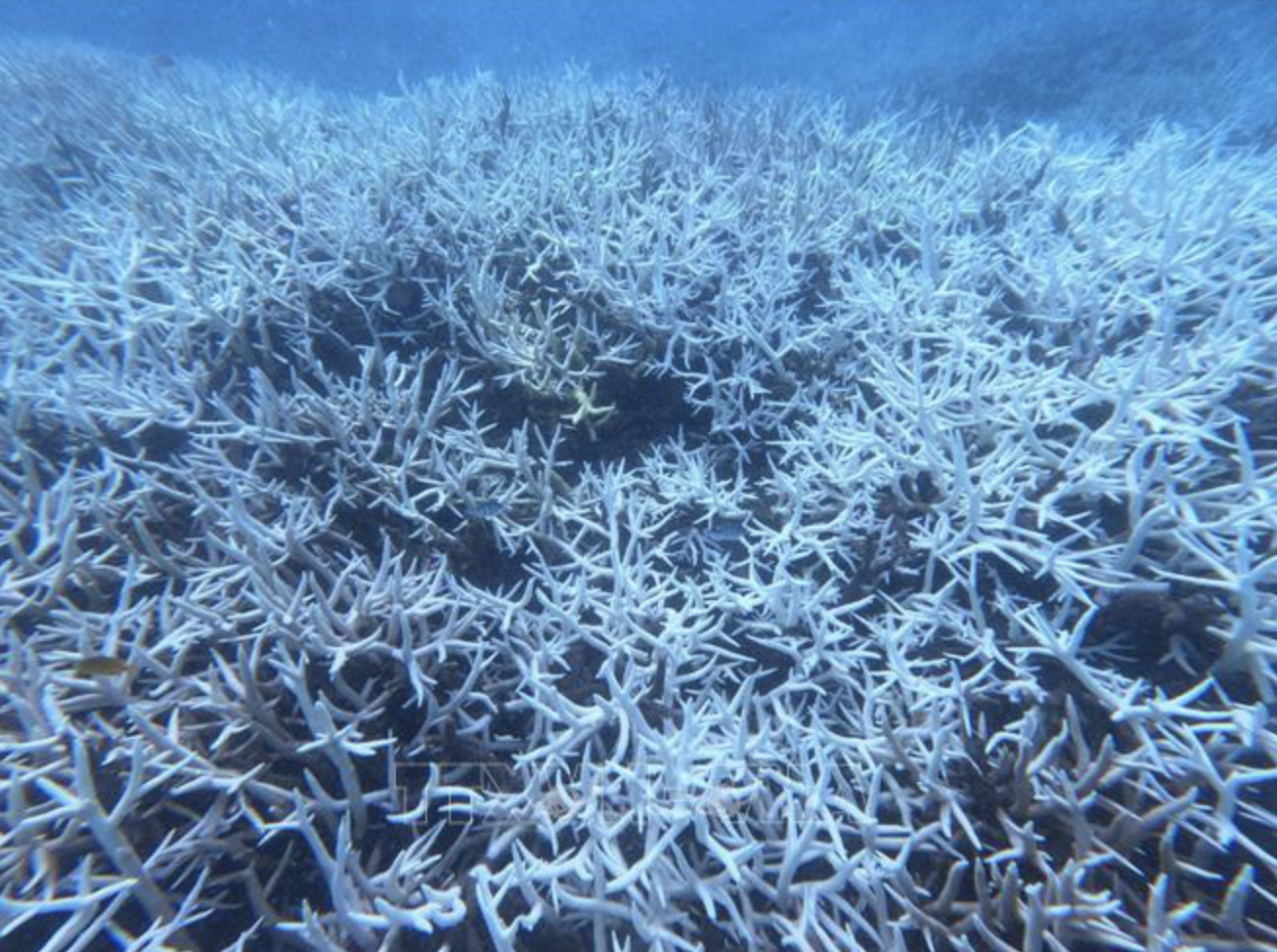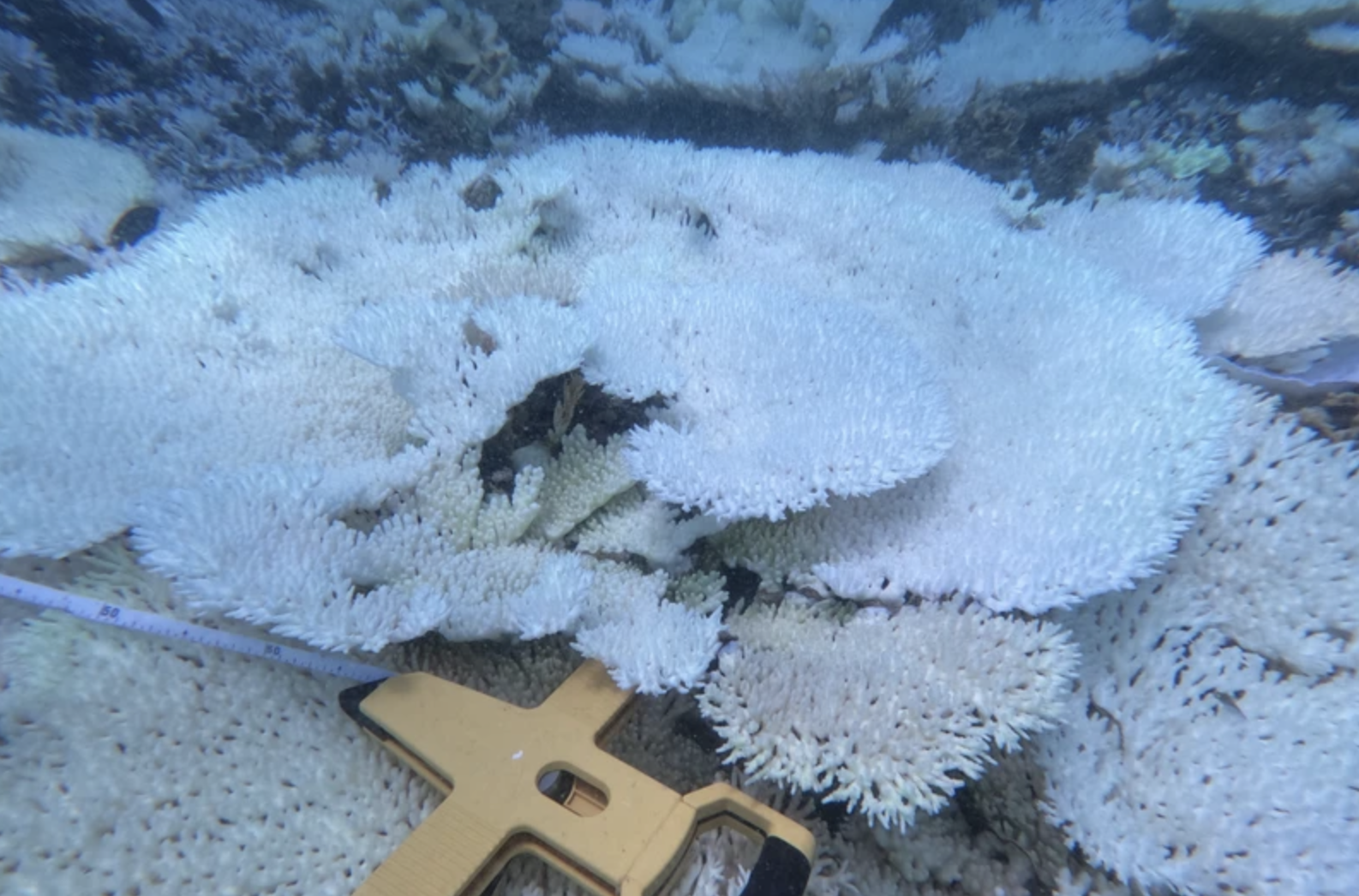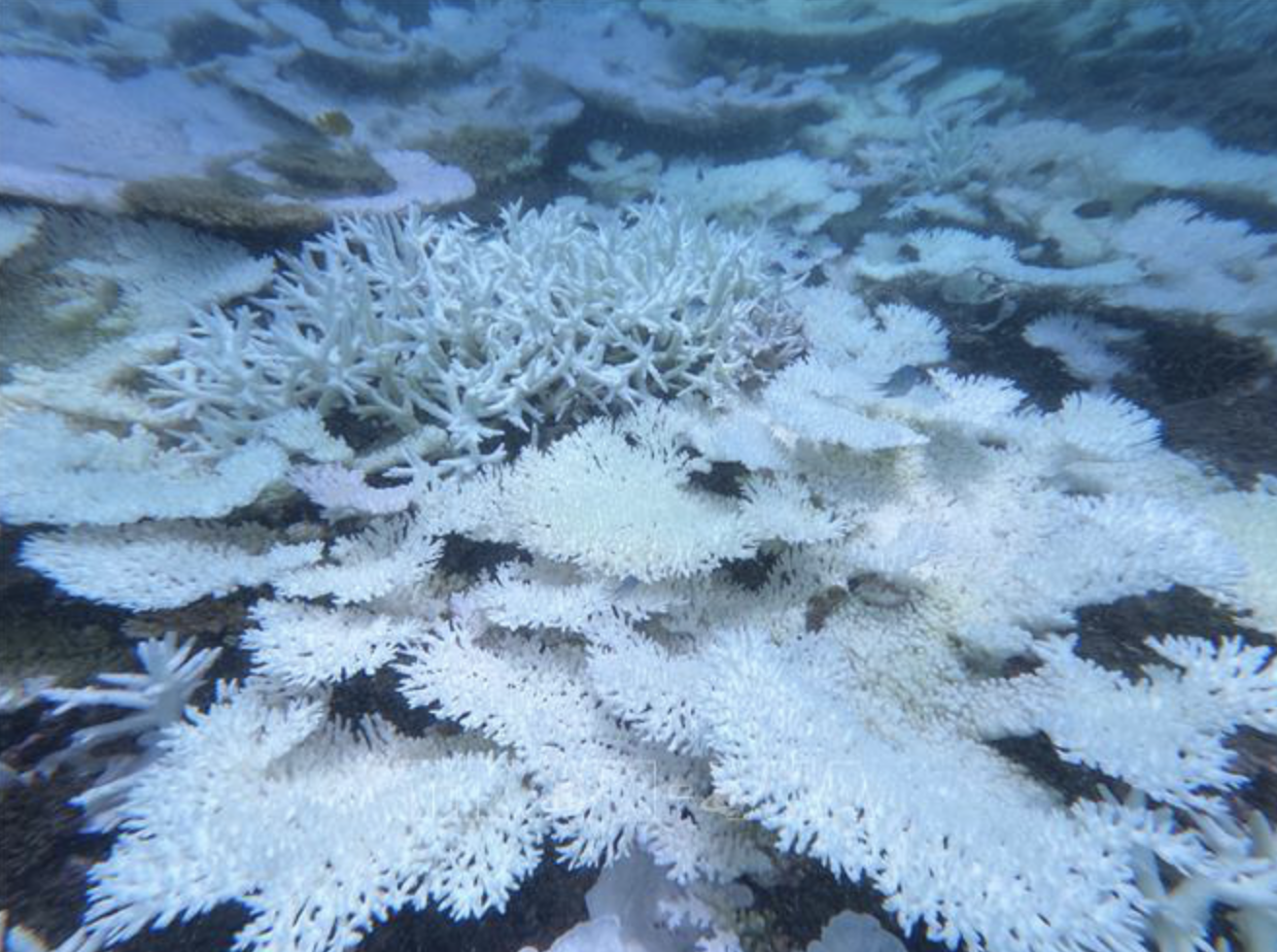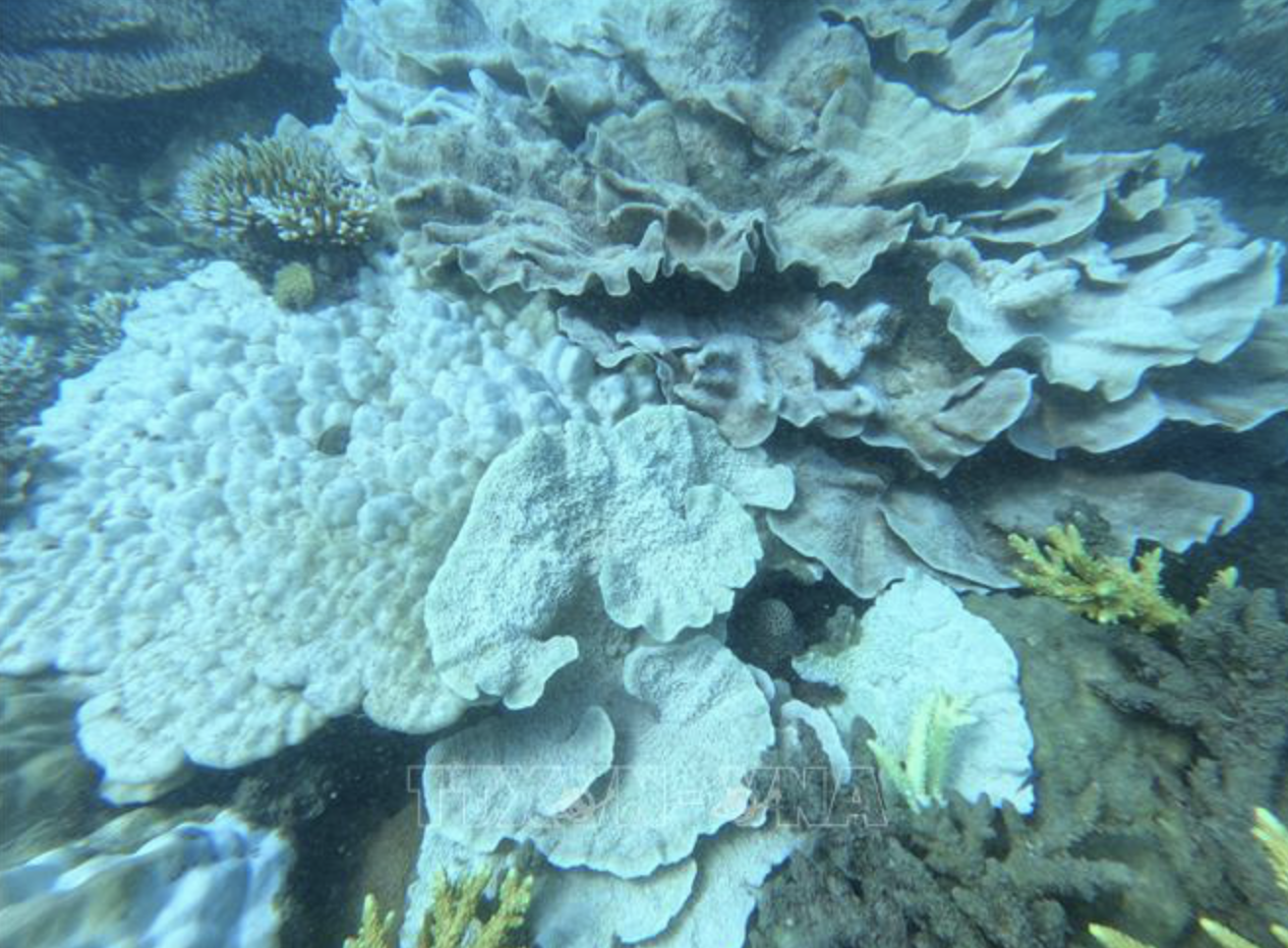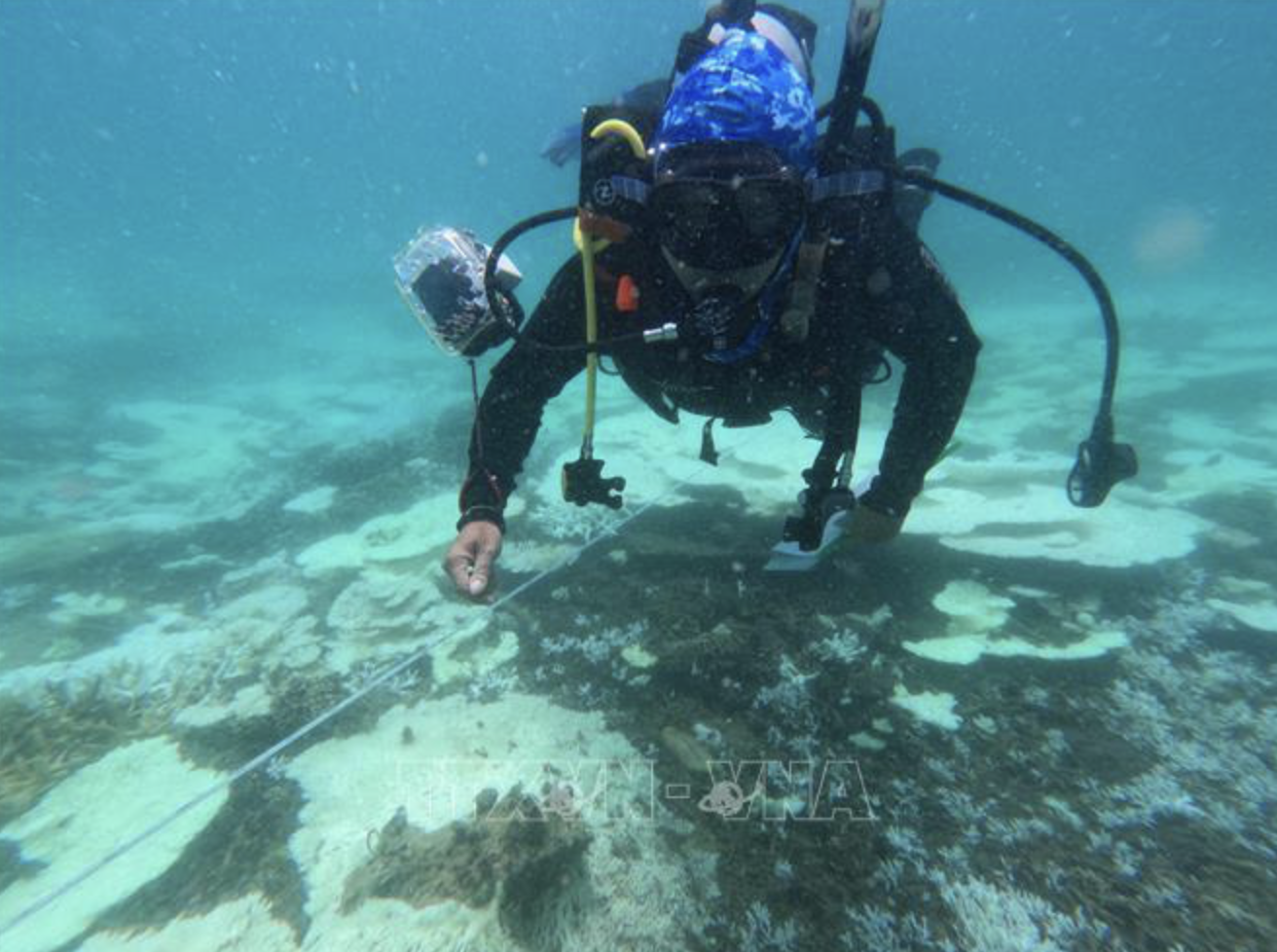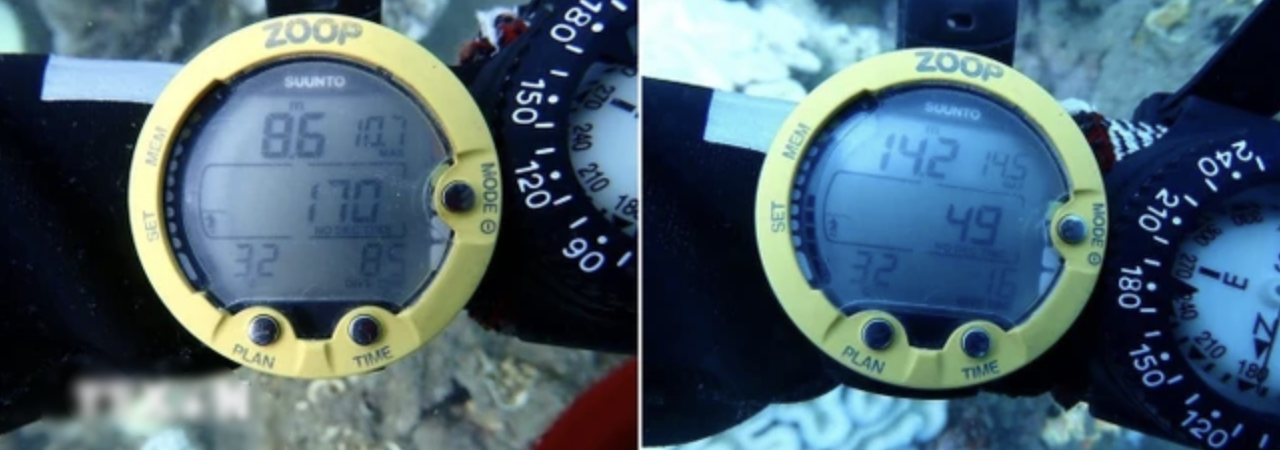The management board of the Con Dao National Park in Con Dao Archipelago off Ba Ria – Vung Tau Province, southern Vietnam has proposed restricting socio-economic growth activities such as seafood exploitation, swimming, and diving services for three months amidst coral bleaching, reported the Vietnam News Agency.
Wastewater release from the mainland into the coral reef areas off the sea in the archipelago should be controlled strictly during the period, said Nguyen Khac Pho, head of the board.
These efforts are meant to restore the coral reefs there.
The board said on Monday that it had cooperated with the Institute of Oceanography under the Vietnam Academy of Science and Technology to survey the status of corals in the waters off Con Dao as they are experiencing severe bleaching.
Coral bleaching happens when corals become white due to loss of symbiotic algae and photosynthetic pigments, which provide them with both color and energy.
|
|
| Officials and scientists conduct a survey on coral bleaching at eight locations on Con Son Island, a part of Con Dao Archipelago, Ba Ria - Vung Tau Province, southern Vietnam. Photo: Vietnam News Agency |
The survey results showed that at several locations in the eastern region of Con Dao, the coral bleaching rate reached from 80 percent to 100 percent.
As many as 20 percent of corals there have died.
In the western region, up to 70 percent of corals have been bleached, while nearly 10 percent of corals have died of bleaching.
|
|
| Coral bleaching in Con Dao Archipelago, Ba Ria - Vung Tau Province, southern Vietnam results from high ocean temperatures. Photo: Vietnam News Agency |
Meanwhile, many coral reefs are being affected by crown-of-thorns starfish and sediments, according to the survey.
The starfish, which feed on corals, were found in coral reefs of Hon Cau, Hon Tai, and Ong Cuong Islands by scientists.
Some scientists participating in the survey attributed mass coral bleaching on Con Dao to increasing sea temperatures that were measured at over 30 degrees Celsius.
The United States’ National Oceanic and Atmospheric Administration in April said that coral reefs around the world were experiencing a mass bleaching event as the climate crisis was driving ocean heat, and the global bleaching could last until October this year.
The waters off Vietnam’s southern region in general and around Con Dao in particular were forecast to witness coral bleaching from May 10 to June 20.
The survey also indicated that the coral bleaching around Con Dao started in mid-May.
The bleaching peaked when the survey was conducted from June 2 to 5, said the scientists.
Therefore, the management board proposed launching the second survey of coral reefs around Con Dao to carefully assess the impact of the bleaching and the capability of coral recovery.
Multiple coral restoration programs slated for July should be postponed. As corals have been bleached, their ability to recover is weak.
Apart from restrictions on sea-based socio-economic development activities, the collection of crown-of-thorns starfish should be taken into account to speed up the restoration of corals.
The world recorded the worst global coral bleaching events in 1998, 2010, and 2016, while Con Dao Archipelago experienced massive coral bleaching in 1998, 2000, 2002, 2010, 2016, and 2019, demonstrating that the natural process has happened there frequently.
|
|
| Hon Tre Nho Island of Con Dao Archipelago, Ba Ria - Vung Tau Province, southern Vietnam sees some 60 - 70 percent of corals bleached. Photo: Vietnam News Agency |
|
|
| Scientists survey coral reefs in Con Dao Archipelago, Ba Ria - Vung Tau Province, southern Vietnam. Photo: Vietnam News Agency |
|
|
| At the depths of 8.6 meters and 14.2 meters in the waters of Hon Tai Island of Con Dao Archipelago, Ba Ria - Vung Tau Province, southern Vietnam, the temperature is measured at 32 degrees Celsius. Photo: Vietnam News Agency |
Like us on Facebook or follow us on Twitter to get the latest news about Vietnam!



